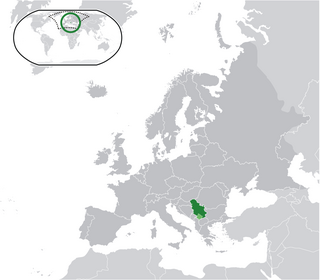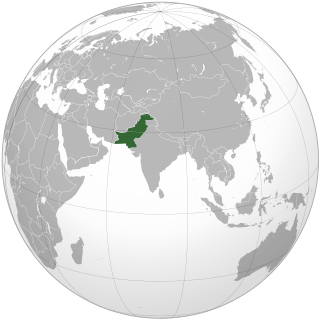A toll-free telephone number or freephone number is a telephone number that is billed for all arriving calls. For the calling party, a call to a toll-free number from a landline is free of charge. A toll-free number is identified by a dialing prefix similar to an area code. The specific service access varies by country.
A telephone numbering plan is a type of numbering scheme used in telecommunication to assign telephone numbers to subscriber telephones or other telephony endpoints. Telephone numbers are the addresses of participants in a telephone network, reachable by a system of destination code routing. Telephone numbering plans are defined in each of the administrative regions of the public switched telephone network (PSTN) and in private telephone networks.

Numbers on the Irish telephone numbering plan are regulated and assigned to operators by ComReg.

Telephone numbers in Cyprus follow a closed telephone numbering plan which was adopted on 1 December 2001. As a result, for landline phone numbers the digit 2 followed by the old area code was affixed to the subscriber number and for mobile phones 9 was affixed to the phone number. The plan is also used in Akrotiri and Dhekelia.
Area code 246 is the telephone area code in the North American Numbering Plan (NANP) for Barbados. The sequence 246 spells BIM on an alpha-numeric telephone keypad, a nickname for the island.
A trunk prefix is a digit sequence to be dialled before a telephone number to initiate a telephone call for the purpose of selecting an appropriate telecommunications circuit by which the call is to be routed.

The dialling plan for mobile networks and new landline operators is closed; all subscriber numbers must be dialled in full. For landline numbers starting with 02, the dialling plan used to be open; the trunk digit and area code could be omitted if the caller was in the same area code as the callee. However, starting May 3, 2008, all landline numbers must be dialled in full.

Regulation of the telephone numbers in Serbia is under the responsibility of the Regulatory Agency of Electronic Communication and Mail Services (RATEL), independent regulatory authority. The country calling code of Serbia is +381. The country has an open telephone numbering plan, with most numbers consisting of a 2- or 3-digit calling code and a 6-7 digits of customer number.

Telephone numbers in the Philippines follow an open telephone numbering plan and an open dial plan. Both plans are regulated by the National Telecommunications Commission, an attached agency under the Department of Information and Communications Technology (DICT).
Telephone numbers in Mexico are regulated by the Federal Telecommunications Institute, an independent government agency of Mexico. The agency published the Fundamental Technical Plan for Numbering on May 11, 2013. The plan establishes a uniform ten-digit telephone number format. It took effect on August 3, 2019.

Telephone numbers in Italy are managed by the Autorità per le Garanzie nelle Comunicazioni (AGCOM), a national regulatory authority for the communication industry located in Rome.

The regulation of telephone numbers in Germany is the responsibility of the Federal Network Agency of the German government. The agency has a mandate to telecommunications in Germany and other infrastructure systems.

Telephone numbers in Pakistan are ten digits long. Landline numbers and mobile numbers have different structures. Geographically fixed landline are prefixed by an area code which varies in length depending on the significance of the place. Mobile numbers are prefixed (03) followed by a two-digit code indicating the telephone operator. The international country code for Pakistan is '+92'.
Slovenia received a new country code following the breakup of the Socialist Federal Republic of Yugoslavia in 1991. Additionally, the Ipko mobile phone company in Kosovo used the +386 country code.
National conventions for writing telephone numbers vary by country. The International Telecommunication Union (ITU) publishes a recommendation entitled Notation for national and international telephone numbers, e-mail addresses and Web addresses. Recommendation E.123 specifies the format of telephone numbers assigned to telephones and similar communication endpoints in national telephone numbering plans.

The telephone numbering plan of the USSR was a set of telephone area codes, numbers and dialing rules, which operated in the Soviet Union until the 1990s. After the collapse of the USSR, many newly independent republics implemented their own numbering plans. However, many of the principles of the Soviet numbering plan still remain. The former Soviet international code +7 is still retained by Russia and Kazakhstan.
Telephone numbers in the United Kingdom have a flexible structure that reflects their historical demands, starting from many independent companies through a nationalised near-monopoly, to a system that supports many different services, including cellular phones, which were not envisaged when the system was first built. Numbers evolved in a piecemeal fashion, with numbers initially allocated on an exchange-by-exchange basis for calls connected by manual operators. Subscriber numbers reflected demand in each area, with single digit telephone numbers in very rural areas and longer numbers in cities.










